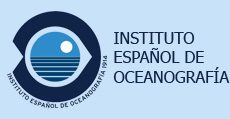- Título: Estimación acústica de la abundancia de anchoa juvenil para la predicción del reclutamiento en el Golfo de Vizcaya. Ecología del proceso de reclutamiento
- Acrónimo: JUVENA 2016-18
- Investigador principal: Nogueira García, Enrique
- Fecha inicio: 01/01/2016
- Fecha final: 31/12/2018
- Resumen:
La gestión de la pesquería de la anchoa en el Golfo de Vizcaya se basa, desde el año 1987, en la información proporcionada por las campañas de estimación de abundancia de adultos que se realizan en primavera. Sin embargo esta información está disponible a finales de junio de cada año, con la costera de la anchoa bien empezada, lo que limita su utilidad para la gestión. La idea de la campaña JUVENA consiste en realizar una estimación acústica de abundancia de anchoa juvenil, cuatro meses después de la puesta, con el objetivo de dar un indicador anticipado del reclutamiento para el año siguiente.
La campaña JUVENA lleva realizándose ininterrumpidamente desde el año 2003 (Boyra et al. 2013). Anteriormente las campañas JUVESU 1998 y 1999 sirvieron para establecer la metodología idónea para la prospección de juveniles y el área geográfica de su distribución (Uriarte et al. 2001). Los tres primeros años, la campaña JUVENA se llevó a cabo a bordo de cerqueros comerciales y a partir del año 2006, a bordo también del B/O Emma Bardán, dotado de arte pelágico. Desde el año 2012, la campaña se realiza conjuntamente entre el AZTI y el IEO, contándose para ello con dos buques oceanográficos que operan coordinadamente, el B/O Emma Bardán y el B/O Ramon Margalef.
Tras diez años continuados de campañas, se ha demostrado su fiabilidad como herramienta predictiva del nivel del reclutamiento (Boyra et al. 2013). Por tanto se espera que su incorporación a la gestión suponga un importante avance, dado que las posibilidades de capturas para el año siguiente (TAC) podrán acomodarse al reclutamiento esperado de anchoa, disminuyendo los riesgos para la población en años de crisis.
La campaña JUVENA está financiada por el Departamento de Agricultura, Pesca y Alimentación del Gobierno Vasco, y la Secretaría General del Mar del Ministerio de Medioambiente y Medio Rural y Marino y el Instituto Español de Oceanografía del Ministerio de Economía y Competitividad del Gobierno Español.
- Abstract:
The stock assessment of Bay of Biscay anchovy is based, since 1987, in the information provided by the stock assessment cruises of the adult population carried out in spring. The information from these cruises is available, however, at the end of June, once the anchovy fishery has been initiated. The JUVENA cruises focuses on the estimation of the abundance of the stock of anchovy juveniles by acoustic methods, four months after the peak spawning period, with the aim of providing an advance estimator of the strength of recruitment for the next year.
The JUVENA cruise has been carried out continuously since 2003 (Boyra et al. 2013). Previous JUVESU cruises in 1998 and 1999 set the methodology for the acoustic estimation of anchovy juveniles and established their distributional area (Uriarte et al. 2001). Between 2003 and 2005, the JUVENA cruises were carried out using commercial purse seiners, and since 2006 the oceanographic vessel RV Enma Bardán equipped with a pelagic trawl was also used. Since 2012, the JUVENA cruise has been carried out by AZTI and the IEO within the frame of a cooperation project, using to this aim two research vessels working in coordination: RV Enma Bardan and RV Ramón Margalef which are operated, respectively by Secretaría General del Mar and the IEO.
The 10 year time series of the JUVENA cruises are proved their usefulness as a predictive tool to assess recruitment of anchovy in the Bay of Biscay for the ne4xt year (Boyra et al. 2013). Accordingly, it is expected that the JUVENA cruise will be incorporated as a management tool of the Bay of Biscay anchovy stock, since it offers the possibility of adjustment of the level of catches for the next year (TAC) to be advance, diminishing the risk of population crises.
The JUVENA cruises are financed by the Departamento de Agricultura, Pesca y Alimentación of the Basque Goverment, and the Secretaría General del Mar del Ministerio de Medioambiente y Medio Rural y Marino y el Instituto Español de Oceanografía del Ministerio de Economía from the Spanish Government.

